Objects Κέντρον Ερεύνης της Ιστορίας του Ελληνικού Δικαίου
<< 10
10 >>
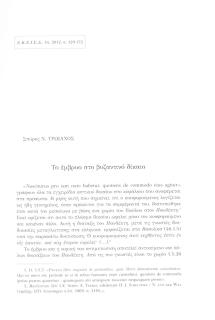
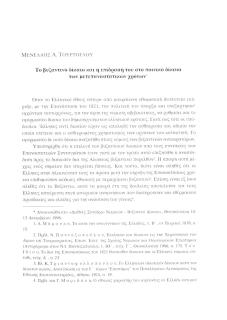
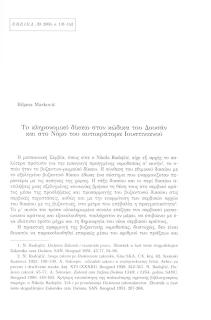
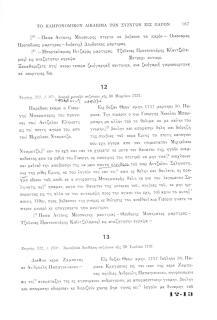
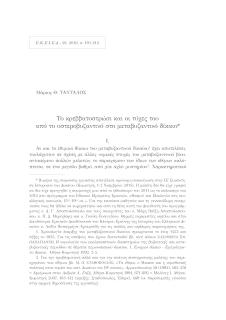
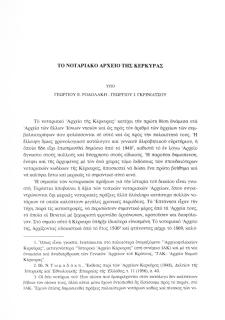
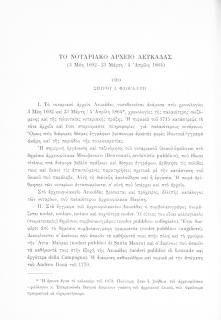
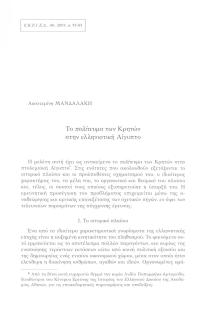
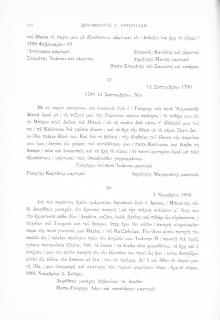
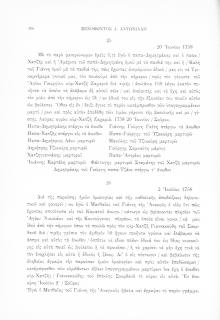

 << 10
10 >>
<< 10
10 >>
Total: 11921

Το έμβρυο στο βυζαντινό δίκαιο
Ενότητα: Μελέτες Ιστορίας Δικαίου
Sp. N. Troianos: Det Embryo im byzantinischen Recht Gegenstand dieses Aufsatzes sind zunächst die familien- und erbrechtlichen Folgen der alten Regel, dass die Leibesfrucht als schon geboren fingiert wird, wenn es dem Kind vorteilhaft ist. Hinsichtlich der Ermittlung, ob durch die Geburt die Rechtsfähigkeit eingetreten ist. wurde lange diskutiert. Im justinianischen Recht obsiegte die sabinianische Meinung, dass der Nachweis der Lebendgeburt auf jede Weise geführt werden kann. Ferner wird die Frage behandelt, ob die kanonistischen Quellen dem Embryo, in Verbindung mit den in Bezug auf dessen Beseelung vertretenen Ansichten, schon ein selbständiges Dasein zuerkannten. In diesem Zusammenhang werden die Tatbestandsmerkmale der Abtreibung und die den Tätern sowohl im weltlichen als auch im kanonischen Recht angedrohten Strafen untersucht. Darüber hinaus werden einige entweder von bekannten Autoren stammende oder anonym überlieferte die Entwiclungsphasen des Embryos im Mutterleib und den Einfluss der Empfängniszeit betreffende Texte vorgestell...
Το βυζαντινό δίκαιο και η επίδρασή του στο ποινικό δίκαιο των μετεπαναστατικών χρόνων
Ενότητα: Μελέτες Ιστορίας Δικαίου
35
Το κληρονομικό δίκαιο στον κώδικα του Δουσάν και στο Νόμο του αυτοκράτορα Ιουστινιανού
Ενότητα: Μελέτες Ιστορίας Δικαίου
39
Το κληρονομικόν δικαίωμα των συζύγων επί ατέκνου γάμου εις την Πάρον κατά τον 18ον αιώνα
Ενότητα: Νομικές Πηγές της Μεταβυζαντινής Περιόδου και του Νεοτέρου Ελληνισμού
8
Το κρεββατοστρώσι και οι τύχες του από το υστεροβυζαντινό στο μεταβυζαντινό δίκαιο
Ενότητα: Μελέτες Ιστορίας Δικαίου
Μ. ΤΗ. Tantalos: Krevatostrosi and its development from Late Byzantine to Post-Byzantine law The evolution of Byzantine and post-Byzantine customary law is not well known. An example of an institution based on customary law is krevatostrosi. Krevatostrosi is the claim of the surviving husband, provided that the couple is childless and there is no will on behalf of the deceased wife, on the bedding as a share of his spouse’s property. Its origins lie in the late Byzantine period as manifested by a few templates of notarial acts. In the post-Byzantine period the institution of krevatostrosi can be traced in many notarial acts, usually marital agreements, originating mostly from the islands of Naxos and Andros. Krevatostrosi is also considered in decisions of the Patriarchal court regarding inheritance law. Lastly, it is also incorporated in manuals of post-Byzantine law in connection to regulations of formal Byzantine and post-Byzantine law. In the course of the eighteenth century however, krevatostrosi in some regions, and particularl...
Το νοταριακό αρχείο της Κέρκυρας
Ενότητα: Μελέτες Ιστορίας Δικαίου
32
Το νοταριακό ἀρχείο Λευκάδας (3 Μάη 1692 - 23 Μάρτη/ 4 Ἀπρίλη 1864)
Ενότητα: Μελέτες Ιστορίας Δικαίου
22
Το πολίτευμα των Κρητών στην ελληνιστική Αίγυπτο
Ενότητα: Μελέτες Ιστορίας Δικαίου
C. Mandalaki, The Cretan politeuma in Hellenistic Egypt. The object of the present study is the politeuma of the Cretans during Ptolemaic Egypt as reported in the papyric testimony P. Tebt. 32=Mitteis - Wilckcn 1912,I (2), no. 448 (145 B.C.;). Aspects that arc specifically examined are the historic background and the conditions that shaped the Cretan politeuma, its particular character, members, organizational and institutional frame and, finally, the purposes it served. A researchive approach of the problem is attempted through the revaluation and critical review of relative sources in view of the recent conclusions of contemporary research to the politeumata in Ptolemaic Egypt. In the frame of our study, that has the Cretan politeuma as starting point, we consolidate the dominant view that the politeumata were pseudo-political unions of soldiers -mercenaries of common national origin and were characterised by a particular, if only rudimental administrative structure and were relatively autonomous within the narrow limits permitted by t...
Το ἰδιοκτησιακό καθεστώς και ἡ ἀγοραπωλησία ἀκινήτων στην Τουρκοκρατούμενη Σκῦρο. (Συμβολή στην ἔρευνα τοῦ μεταβυζαντινοῦ ἑλληνικοῦ δικαίου)
Ενότητα: Νομικές Πηγές της Μεταβυζαντινής Περιόδου και του Νεοτέρου Ελληνισμού
29-30Α
Το ἰδιοκτησιακό καθεστώς και ἡ ἀγοραπωλησία ἀκινήτων στην Τουρκοκρατούμενη Σκῦρο. (Συμβολή στην ἔρευνα τοῦ μεταβυζαντινοῦ ἑλληνικοῦ δικαίου)
Ενότητα: Νομικές Πηγές της Μεταβυζαντινής Περιόδου και του Νεοτέρου Ελληνισμού
29-30Α
Το ἰδιοκτησιακό καθεστώς και ἡ ἀγοραπωλησία ἀκινήτων στην Τουρκοκρατούμενη Σκῦρο. (Συμβολή στην ἔρευνα τοῦ μεταβυζαντινοῦ ἑλληνικοῦ δικαίου)
Ενότητα: Νομικές Πηγές της Μεταβυζαντινής Περιόδου και του Νεοτέρου Ελληνισμού
Συρίβλι

